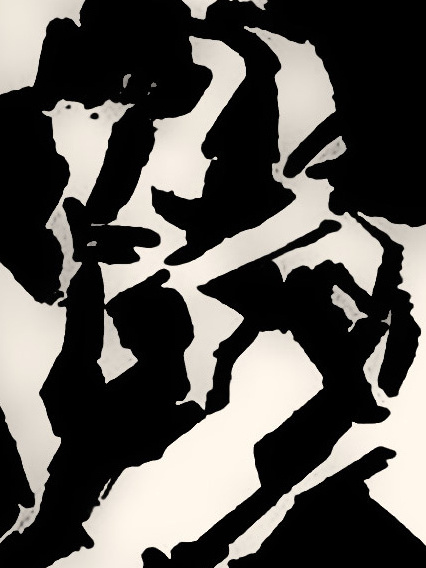
It is extremely interesting to observe this creative transition in a work from 1917, “Danseuse assise sur un lit en train de rattacher les lacets de ses ballerines“. It is an important piece, entirely dominated by blue shades, in the background, in the sheet folding, on the panties and on the skin shadows. A picture of discreet beauty but very
intense. What attracts us here, is the distinctness of the line drawing and the robust body. The pose of the dancer is in the same time nonchalant and composed, studied from a distance, which makes her present in the forms but absent through the look. The blue shades confer a somewhat unreal sensation. This work is well anchored in the century with a healthy sensuality which reminds us of Suzanne Valadon in her last decades. However and without any explanation an abstract sketch of this picture honours the cover of the Retrospective exhibition 1908-1918 that Beer held in February 1919 at the New gallery of Art in Stockholm, in parallel to the large February Group Exhibition at Liljewalchs (where the painter only presented his cubist works from 1918-1919). The non-figurative sketch (not cubist though) in black and white on the 1919 catalogue cover, corresponds when looking carefully to the exact drawing line of the dancer represented on the blue canvas from 1917 (this was first to be remarked in 2002 by Renata Barbosa of the University of Strasbourg). Even more thrilling is the fact that Dick Beer executed in 1918 a larger cubist version of his blue ballerina. From the point of view of the art historian it would be extremely pertinent to make the connection between the 1917 canvas, the abstract drawing and the 1918 cubist dancer, for a study of colours and light, the overall composition, prevailing moods, and what changes passing from naturalist to cubist..
(Continued)